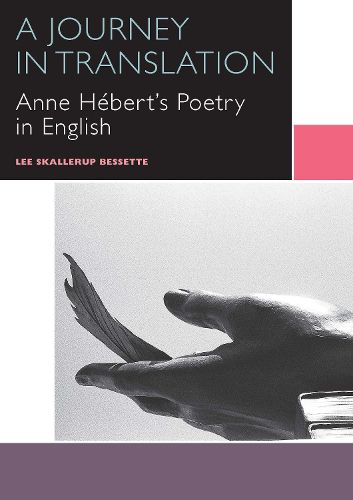Readings Newsletter
Become a Readings Member to make your shopping experience even easier.
Sign in or sign up for free!
You’re not far away from qualifying for FREE standard shipping within Australia
You’ve qualified for FREE standard shipping within Australia
The cart is loading…






This book traces the remarkable journey of Hebert’s shifting authorial identity as versions of her work traveled through complex and contested linguistic and national terrain from the late 1950s until today. At the center of this exploration of Hebert’s work are the people who were inspired by her poetry to translate and more widely disseminate her poems to a wider audience.
Exactly how did this one woman’s work travel so much farther than the vast majority of Quebecois authors? Though the haunting quality of her art partly explains her wide appeal, her work would have never traveled so far without the effort of scores of passionately committed translators, editors, and archivists. Though the work of such middle men is seldom recognized, much less scrutinized as a factor in shaping the meaning and reach of an artist, in Herbert’s case, the process of translating Hebert’s poetry has left in its wake a number of archival and other paratextual resources that chronicle the individual acts of translation and their reception.
Though the impact of translation, editions, and archival work has been largely ignored in studies of Canadian literary history, the treasure trove of such paratextual records in Hebert’s case allows us to better understand the reach of her work. More importantly, it provides insight into and raises critical questions about the textually mediated process of nation-building and literary canon formation.
$9.00 standard shipping within Australia
FREE standard shipping within Australia for orders over $100.00
Express & International shipping calculated at checkout
This book traces the remarkable journey of Hebert’s shifting authorial identity as versions of her work traveled through complex and contested linguistic and national terrain from the late 1950s until today. At the center of this exploration of Hebert’s work are the people who were inspired by her poetry to translate and more widely disseminate her poems to a wider audience.
Exactly how did this one woman’s work travel so much farther than the vast majority of Quebecois authors? Though the haunting quality of her art partly explains her wide appeal, her work would have never traveled so far without the effort of scores of passionately committed translators, editors, and archivists. Though the work of such middle men is seldom recognized, much less scrutinized as a factor in shaping the meaning and reach of an artist, in Herbert’s case, the process of translating Hebert’s poetry has left in its wake a number of archival and other paratextual resources that chronicle the individual acts of translation and their reception.
Though the impact of translation, editions, and archival work has been largely ignored in studies of Canadian literary history, the treasure trove of such paratextual records in Hebert’s case allows us to better understand the reach of her work. More importantly, it provides insight into and raises critical questions about the textually mediated process of nation-building and literary canon formation.